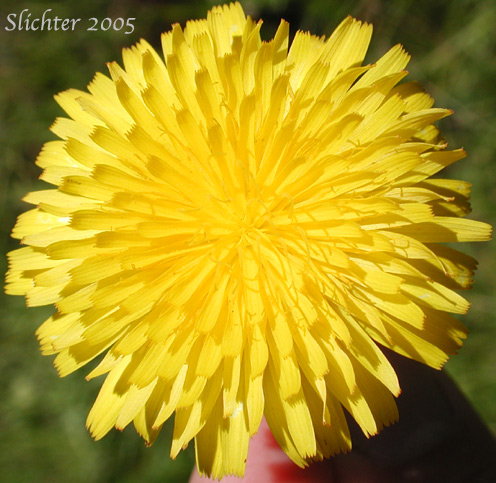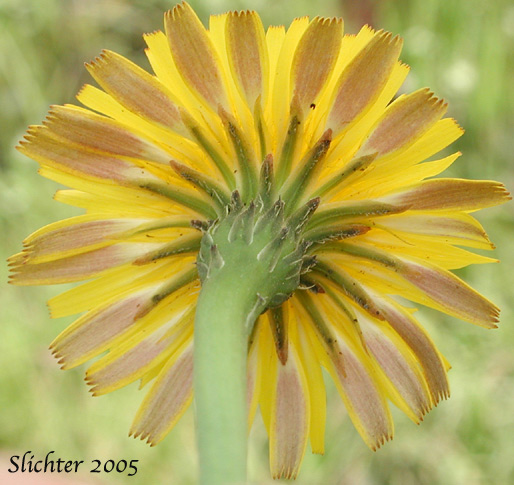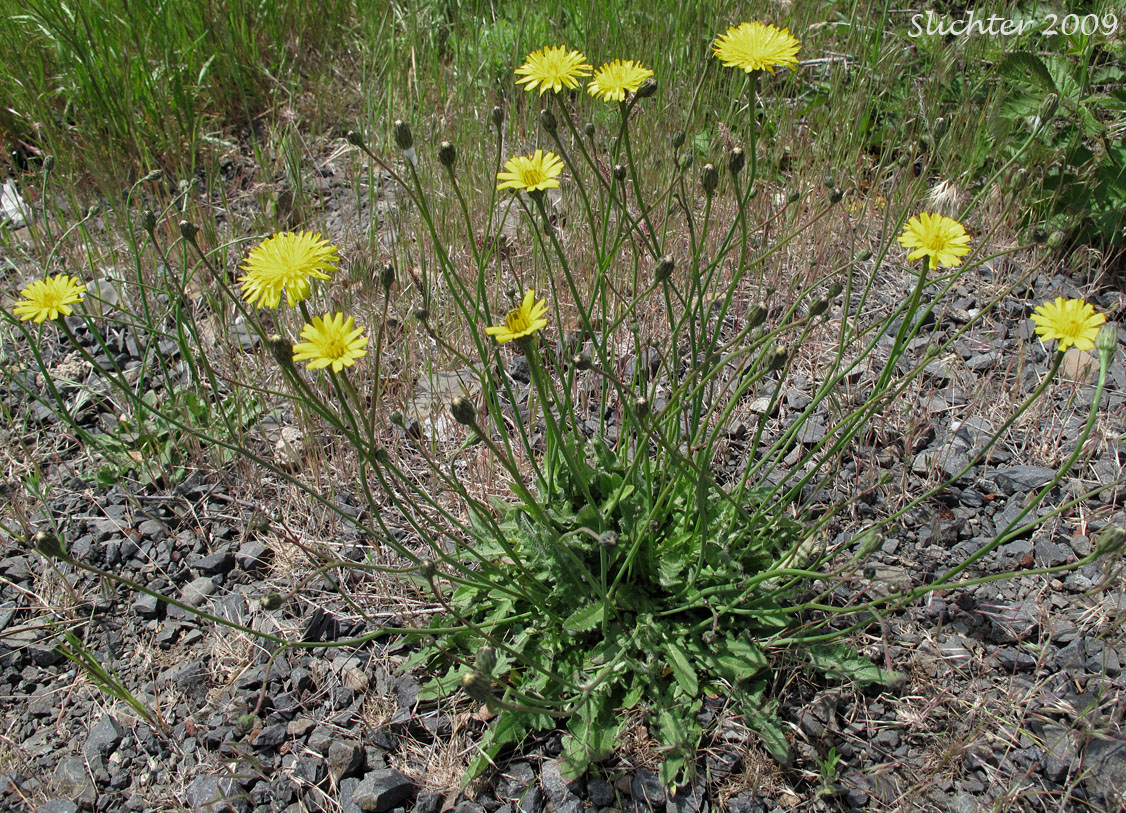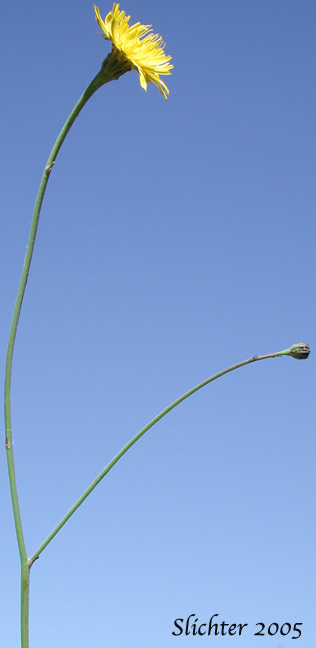[False Dandelions and Cat's-ears: The Genus Hypochaeris in the Columbia River Gorge of Oregon and Washington]
Hairy Cat's-ear, False Dandelion, Rough Cat's-ear
Hypochoeris radicata

The photo above shows the dense cluster of ray flowers that makes
up the flower head of rough cat's-ears. Photographed at Babyshoe Pass on the
northwestern slopes of Mt. Adams.........August 6, 2005.
Characteristics:
Somewhat dandelion-like, false dandelion has
lobed leaves similar to the common dandelion, although the former has narrower
lobes and a rough, hairy texture to the leaf surfaces. Individual leaves are
oblanceolate, toothed/lobed or pinnatifid, with the leaves 3-35 cm long and
5-70 mm wide. The several stems are slimmer than those on the common dandelion,
and not noticeably hollow. The stems arise from 15-60 cm tall, and are commonly
branched, each branch ending with a single flower head.
The flower heads consist of numerous yellow ray
flowers. Several flower heads may be found on the branched stems. The involucral
bracts are not curved downward as is the case in common dandelions.
Habitat:
False dandelion is an indicator plant of disturbed
places, such as lawns and pastures, and occasionally into drier, waste places.
Range:
A native of Europe, false dandelion is now a widespread
weed over much of the United States and southern Canada, although it is rarer
east of the Cascade Mts.
It is found in disturbed areas throughout much
of the gorge, but is not as common as a number of other weedy species.

The photo above shows the rusty-tinged ventral
surface of the ray flowers of rough cat's-ear. Note that at least on this sample,
the outer series of rays are somewhat burnt-orange in coloration and narrowly
lined with yellow along the ray margins.

A view of false dandelion as seen on disturbed soils at Catherine Creek, Columbia River Gorge........May 10, 2009.

The branched, leafless stems measure up to
50 cm high and typically bear several flowerheads.

The photo above shows the upper surface of
the pinnately lobed basal leaf which can be up to 15 cm long.

The photo above shows a close-up side-view
of the same leaf, showing the numerous spreading hairs on both leaf surfaces.
Paul Slichter